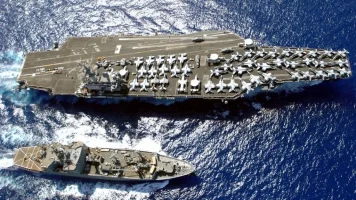- Views: 1K
- Replies: 6
In a move that significantly bolsters India's naval capabilities, Navy Chief Admiral D.K. Tripathi has confirmed the planned induction of a 1,500-km Long-Range Hypersonic Anti-Ship Missile (LRAShM). This advanced weapon system is set to enhance the Indian Navy's offensive and defensive capabilities across the Indo-Pacific region.
The integration of the LRAShM will begin with the Indian Navy's surface fleet. Warships, with their larger platforms and advanced Vertical Launch Systems (VLS), are better suited for accommodating and deploying these hypersonic missiles. This initial deployment will allow the Navy to quickly integrate this powerful new capability into its operational strategy.
Deploying the LRAShM on submarines presents a different set of challenges. Currently, none of the Indian Navy's submarines are equipped with the necessary Vertical Launch Systems. This limitation will be addressed with the induction of new nuclear attack submarines (SSNs), which are being developed under a program recently approved for induction by 2036. These submarines will feature VLS systems capable of launching hypersonic missiles, adding a significant underwater dimension to India's hypersonic strike capabilities.
The LRAShM is designed as a non-nuclear weapon system intended for high-impact conventional strikes. It will complement other advanced weapon systems planned for India's nuclear attack submarines, including Long-Range Subsonic Cruise Missiles for land attack and anti-ship roles. This combination will provide the Navy with a versatile and powerful arsenal to address a wide range of threats.
The planned induction of the 1,500-km LRAShM underscores the Indian Navy's commitment to modernizing its arsenal and enhancing its combat readiness. By 2036, when the new nuclear attack submarines are operational, the Navy will possess a formidable combination of surface and subsurface platforms equipped with state-of-the-art hypersonic weapons, significantly enhancing its deterrence capabilities and strategic reach in the Indo-Pacific region.




